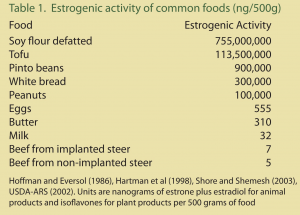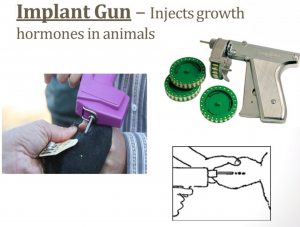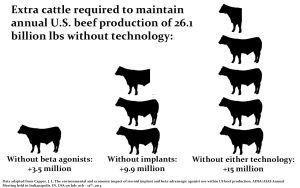Thanksgiving is almost upon us and it’s time to bite into that big juicy slice of turkey. But have you ever noticed the marketing label on the package where it says “no added hormones and steroids?”
Folks, we are being deceived! Like many other marketing phrases on food labels that I’ve debunked here, there is no such thing as added growth hormones in poultry or pork. It doesn’t even exist. By law, if the label “no added hormones or steroids” is used on a package of pork or poultry products, it must be followed up with an asterisk and fine print: *federal law strictly prohibits the use of hormones in poultry. Here are seven reasons why chickens and turkey can prosper and grow without the use of added hormones.
All different types of food naturally contain hormones. So do animals and people, obviously. But you may be surprised to see the levels of these hormones. What if I told you that there are more hormones in a bun than there are in an actual burger?
That’s right, folks. White bread can contain 300,000 nanogram of estrogen, try comparing that to other foods here:

If you’ll notice in this chart, it shows the difference in nanograms between a treated steer and a non-treated steer. This is because growth hormones are permitted in beef cattle and very rarely, sheep. It isn’t very common practice in sheep but it is allowed via the FDA.
On our farm, we do sometimes use growth hormones on our beef cattle, and it isn’t always an easy task. Have you ever tried wrangling a 900-pound animal into a chute? For us, we do it at the same time we do a deworming treatment to kill two birds with one stone, which protects them from worms and common diseases. But not every farm does this. We use a device that looks like the image below, it puts a little pellet underneath the skin of the ear which dissolves and helps them convert feed to muscle more efficiently.

You’ll notice on the chart above that there is only 2 nanograms of difference between a steak that’s been treated and one that has not, and a nanogram is a billionth of a gram. Billion. With a “b.” Iowa State University breaks this down further and explains that the average man naturally produces 135,000 ng per day, a woman produces 513,000 per day, and a pregnant woman can produce up to 20 million nanograms of estrogen per day! This just goes to show that to bicker about only 2 nanograms clearly makes no logical sense. In order for growth hormones in beef to affect humans, you would need to eat thousands of pounds of steak in a single sitting. (Challenge accepted.)
So why use them? Well an obvious reason for us is that we feel we get a return on investment. After spending our money and time on using them, we find our cattle are fatter by the time they’re market ready, thus bringing in a higher price. We know they are safe, and we eat our own delicious beef almost daily! It can also help to keep food affordable.
But more importantly, as the population grows, we must continue to work to lower our carbon footprint, so the ability to produce more beef with less animals is a good thing for the environment. They say if all the beef in the U.S. alone were were grass-fed start to finish, we would need an area of land the size of Texas to feed them all. Grain finished and implants can maximize yield, thus reduce our carbon footprint and rely on less animal to feed the masses. Just look at how many less cattle we need thanks to the safe and efficient technology we have access to:

So there you have it. The next time you’re at a restaurant, farmers market, or grocer and the marketing label says, “Our chickens have no added hormones!” You can smile and know that all chicken is free from added hormones. I do hope you enjoy your steroid-free thanksgiving turkey since none of it has steroids, and if you eat beef there is probably no reason for you to pay extra for “no added hormones.” It’s all a marketing gimmick.
Did you like what you read? Sign up here in a heartbeat to get the best from AGDAILY.com!



